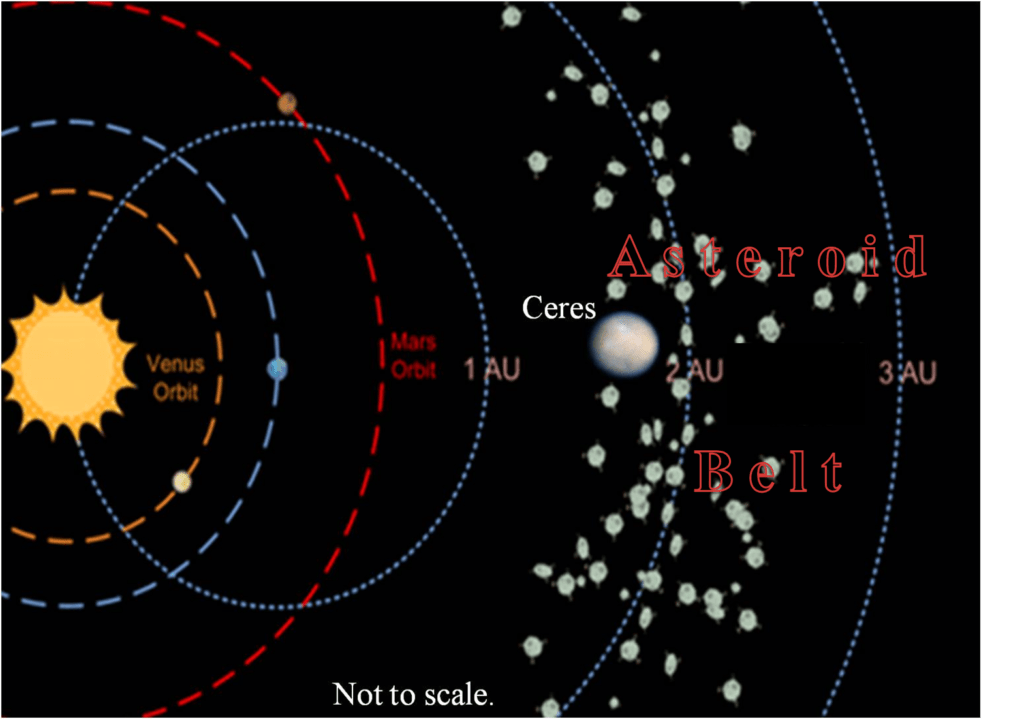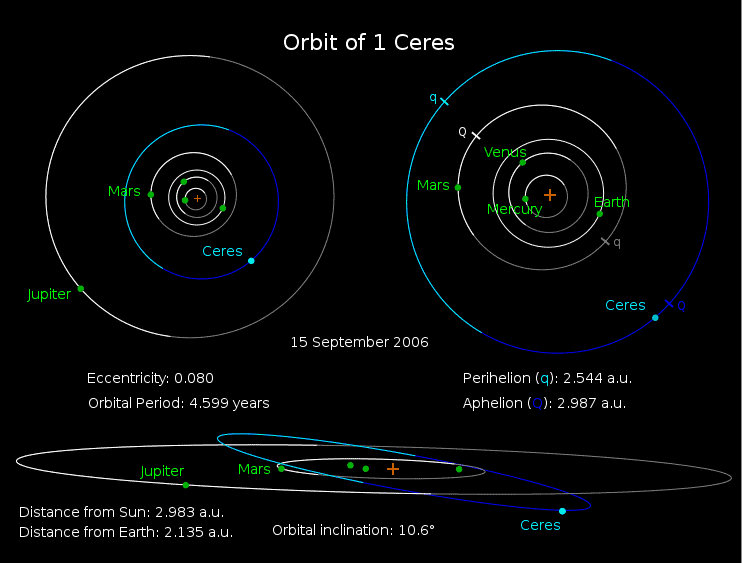CERES is the largest object in the main asteroid belt that lies between the orbits of mars and jupiter and the only dwarf planet which lies in the inner solar system.
- Ceres is believed to have been formed around 4.5 billion years ago when the Solar System was forming. Gravity pulled swirling gas and dust and it resulted in the creation of the small dwarf planet.
- It comprises 25% of the asteroid belt's total mass.
- It is the only object in the asteroid belt currently known to be rounded by its own gravity.


- It takes 4.6 years, to make one trip around the sun and completes one rotation around its own axis every 9 hours.
- Ceres doesn't have any moons or rings and scientists also believe that it also lacks a magnetosphere.
- Ceres is named after the Roman goddess of grain crops and harvests. The world cereal comes from the same name.
- It is the first dwarf planet visited by spacecraft. 'DAWN' reached it in 2015 to study its surface, composition and history.
- There’s no evidence of an atmosphere on Ceres, only sporadic water vapor—possibly from ice ejected by small impacts.
- Using gravity measurements obtained by NASA's Dawn mission, the authors showed that an ascending plume made of a mixture of salty water and rock rose from within the dwarf planet.
- Once that material erupted onto the surface, it formed a mountain 2.5 miles (4 kilometers) high and 10.5 miles (17 kilometers) wide. While this process occurred at very cold temperatures on Ceres.
- Its composition lends itself to the formation of life as we know it. Its prospects for life are positive.
- Ceres has a mysterious white spot which can be seen in old hubble images and recent images and every second ceres loses 6 kg of its mass in steam which are considered to be plumes of water vapour shooting up from ceres' surface.
Muy buena información
ReplyDelete